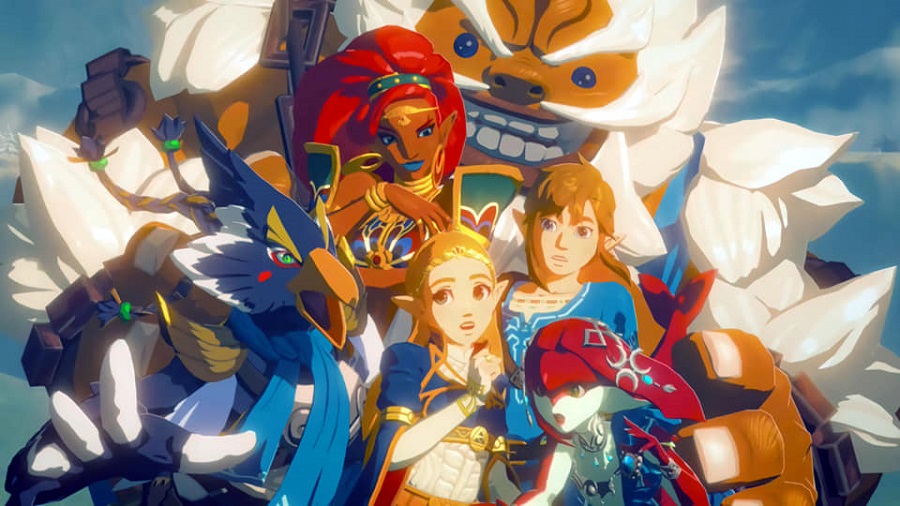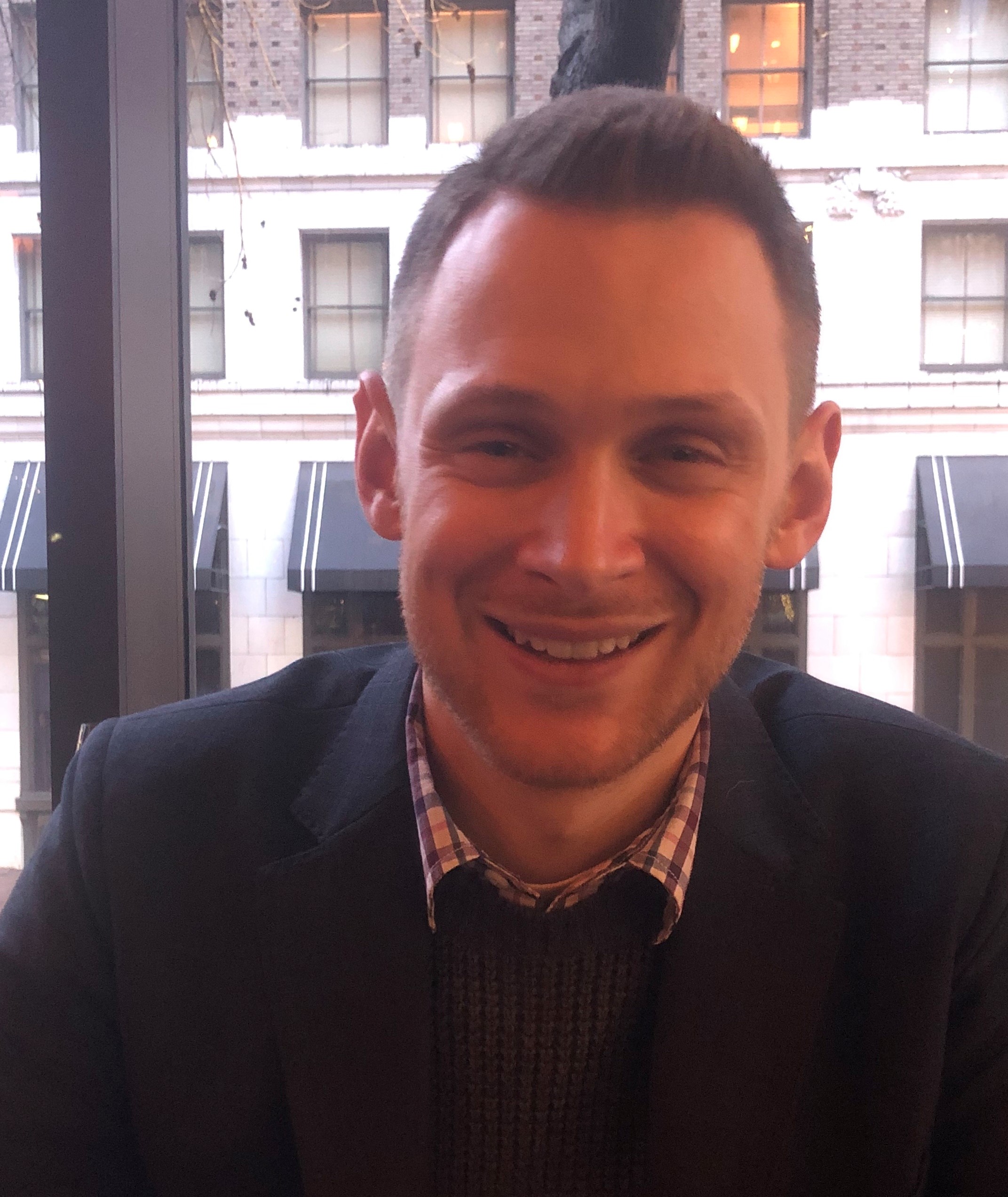Memories from the Illusory Realm: Post Traumatic Growth in The Champions’ Ballad
Posted on October 10 2020 by David Lasby

“In Hyrule, I was always on the verge of something new, a promise of discovery that freed my spirit from the two-ton anchor of my own thoughts. In Hyrule, if only for a few hours, I could breathe. Breath of the Wild had become very significant to me…Hyrule had become my escape.”
These words from Derek Buck speak for more than just himself in this 2017 piece; The Legend of Zelda: Breath of the Wild has been a lifeline to many drowning in depression, anxiety, and mental health crises. Its open world, full of light and beauty, offers players a chance to explore, embrace creativity, and to delight in the whimsical details of Hyrule. Perhaps most important, players are granted the power to tell their own story in the wild, post-calamity world. While the mental health benefits of the 2017 Zelda title have been well documented, the storylines of the downloadable content (DLC) have been examined far less; and that’s a shame because the second DLC has perhaps some of the most healing narratives in the game.
In his Youtube video exploring the origins of Monk Maz Koshia, Nintendo Black Crisis offers a fascinating theory about The Champions’ Ballad, the DLC storyline for The Legend of Zelda: Breath of the Wild. Regarding Link’s use of the Champions’ abilities and the One-Hit Obliterator, he argues that in order to use this sacred weapon, one would have to have mastery of each Divine Beast; furthermore, when Link enters the Illusory Realm (the place of memories) and fights the Blights in the exact manner of each Champion, he notes that it is not Link’s own memories that he experiences but rather those of the Champions as they make their final stand. Nintendo Black Crisis theorizes that the most likely explanation for all of this is that a piece of each Champion’s spirit enters into Link as he gains and uses their respective abilities; and therefore he receives their traumatic memories as well. (For further explanation, watch his video at 13:05)

Beyond providing an explanation for the nature of the monk’s trial of Link, the theory from Nintendo Black Crisis, and ultimately The Champions’ Ballad itself, constructs a beautiful and complex picture of the trauma survivor’s journey through abyss of memory and into post traumatic growth.
Trauma lies at the very the core of the Breath of the Wild narrative. The Great Calamity destroyed a kingdom, took countless lives, and produced generational trauma that spans a hundred years. By the time Link awakens within the Shrine of Resurrection, the children and grandchildren of those who faced the Great Calamity make their way through a desolate Hyrule, still picking up the pieces of their families’ lives. Even the Hero of the Wild himself must come to terms with the trauma he has endured, defending Princess Zelda and the kingdom to his last breath. Many have observed that loneliness defines the overworld of Breath of the Wild, and while this is a human experience that extends beyond trauma, there is perhaps nothing that encapsulates the lived experience of survivors more. It is in this sense then that something very beautiful emerges in The Champions’ Ballad, a story arc that players likely travel after they have defeated Calamity Ganon. The heartbeat that reverberates through The Champions’ Ballad is not hardship, but post traumatic growth.
Within the professional field of mental health, there are two powerful treatments for Post Traumatic Stress Disorder (PTSD) that I believe resonate deeply with the narrative in The Champions’ Ballad. While somewhat different in their application both EMDR (Eye Movement Desensitization and Reprocessing therapy) and LI (Lifespan Integration Therapy) seek to carefully reintegrate trauma survivors into their whole self, eliminating the fragmentation that can occur in the brain due to trauma, and lessening the sting of traumatic memory and experience. Both therapies rely upon the the patient revisiting, and in a sense reliving, the traumatic moment.
Peggy Pace, founder of LI therapy explains, “Lifespan Integration relies on the innate ability of the body-mind to heal itself….[it] utilizes repetitions…of memories to facilitate neural integration and rapid healing.” She observes that “Through the process of LI therapy clients come to understand…that they are living here and now in present time. The process of viewing…memories of their lives strengthens connections between neurons…and…is key to a unified sense of Self.”
While receiving treatment, clients may imagine themselves intervening in the traumatic moment, integrating their past and present selves by acting upon the memory, altering it if needed in order to find power in what was otherwise a devastating experience, and to ultimately allow the brain to move forward to the present. It is this process of unifying the self and intervening that I believe allows Link and the Champions to move through their collective and individual traumas, and at last find rest after Link revisits their darkest memories.
As each Champion imparts a piece of their spirit to Link, imbuing him with their unique powers, he also takes on their grief, their lingering defeat, their terror. After gathering the requisite Champion Emblems for each Divine Beast, Link is granted access to the Illusory Realm, the place of memory. Monk Maz Koshia warns Link, saying “The enemy you shall face is a product of the fear that dwells within. You must overcome this fear to proceed. The battle is a trial of the soul.” In other words, Link must face the moments in which he lost his dear friends, overcoming not only his own suffering, but their shared trauma as well.
Avoidance is a driving impulse for survivors; revisiting the moment of pain or terror triggers a limbic response (fight / flight / freeze) in the brain, and as a result, most push the memory away or bury it in the subconscious; however in order to experience liberation and healing, it is crucial to face what happened and thus bring the memory into the conscious mind. It is exactly this that Link does in his trials. With each journey to the Illusory Realm, he enters into combat with the perpetrator of the Champions’ collective trauma, the Blights, creatures especially designed by Ganon to kill Link’s friends. Link wears the clothing his friends died in, uses the weapons with which they fought to the death, faces the monsters that stalked them inside the Divine Beasts. Link is going there both in spirit and therapeutically.

Link closes his eyes and enters a meditative state at the direction of Monk Maz Koshia. During this meditation, the buried memories of trauma for each Champion are brought into the conscious mind. It is here that change begins to occur.
Rather than simply reliving the same horror, Link is granted a kind of agency, the ability to reshape the memory in a way that produces a different outcome. Rather than watching his friends fall, or having the internalized spirit of the Champions re-experience death, Link defeats the Blight in combat; he imagines a different outcome, made manifest by the strength of his courage. It is important to note that in all likelihood, the player has defeated Calamity Ganon by this time, so the conflict resolved here is removed from the threat facing Hyrule and is personal, spiritual in nature. Link’s imagined victory does not and cannot change the events of history, but it does change the way in which he and the Champions relate to the memory. This change in relation and the healing that follows is what’s known as post traumatic growth (PTG).
According to psychologist Richard Tedeschi, PhD, when undergoing post traumatic growth “People develop new understandings of themselves, the world they live in, how to relate to other people, the kind of future they might have and a better understanding of how to live life.” Link’s re-imaging of the moments of trauma functions like treatment, not all that dissimilar in outcome from EMDR and LI. The horrific past has not changed, but the characters’ relationship to it has.
This transformation is finalized when Link emerges from the Illusory realm to meet Kass, who finishes and performs his song memorializing the fallen Champion, interweaving collected interviews, stories, and fond memories shared with the bard by all who loved and lived with the community’s lost hero. These form a new tapestry in the mind that redefines the life and death of those Link lost. Link and the Champions emerge from the quagmire of the past, modeling post traumatic growth.

The Legend of Zelda: Breath of the Wild continues to be a refuge for those in need of escape, who yearn for relief from the chaos and frustration of life in a pandemic and the mental drain of 2020. With news of two new installments in the game’s narrative universe, it will be interesting to see how the storytelling from Nintendo continues to reflect the shared traumas of our own world, and provides a template for facing that darkness with courage; and like the Hero of the Wild, may our courage bring peace and liberation to those in need around us.
David Lasby is a staff writer at Zelda Dungeon. His favorite Zelda games are Breath of the Wild and A Link to the Past. You can find him on Twitter to talk all things Nintendo, sci-fi / fantasy, and creative writing.

I’m a life-long fan of video games and have been playing since I got my NES in the 1980s. The Legend of Zelda, Super Smash Bros., Aliens, and Halo are some of my favorite game franchises. I write for several sites, including Zelda Dungeon, Boss Rush Network, and The Mighty. Find me on Twitter to check out my other content!



